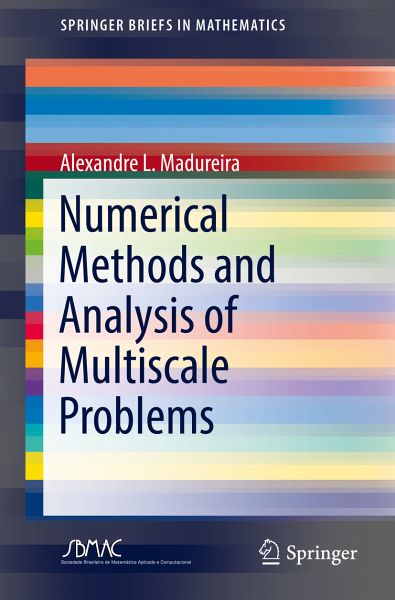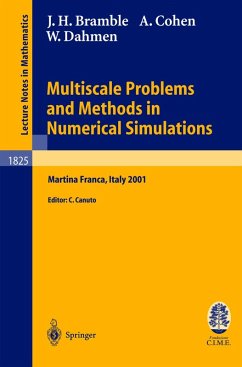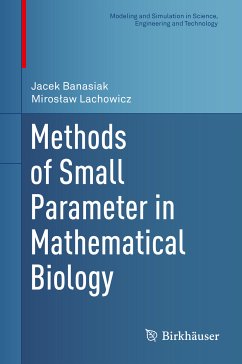
Numerical Methods and Analysis of Multiscale Problems (eBook, PDF)
Versandkostenfrei!
Sofort per Download lieferbar
40,95 €
inkl. MwSt.
Weitere Ausgaben:

PAYBACK Punkte
20 °P sammeln!
This book is about numerical modeling of multiscale problems, and introduces several asymptotic analysis and numerical techniques which are necessary for a proper approximation of equations that depend on different physical scales. Aimed at advanced undergraduate and graduate students in mathematics, engineering and physics - or researchers seeking a no-nonsense approach -, it discusses examples in their simplest possible settings, removing mathematical hurdles that might hinder a clear understanding of the methods.The problems considered are given by singular perturbed reaction advection diff...
This book is about numerical modeling of multiscale problems, and introduces several asymptotic analysis and numerical techniques which are necessary for a proper approximation of equations that depend on different physical scales. Aimed at advanced undergraduate and graduate students in mathematics, engineering and physics - or researchers seeking a no-nonsense approach -, it discusses examples in their simplest possible settings, removing mathematical hurdles that might hinder a clear understanding of the methods.
The problems considered are given by singular perturbed reaction advection diffusion equations in one and two-dimensional domains, partial differential equations in domains with rough boundaries, and equations with oscillatory coefficients. This work shows how asymptotic analysis can be used to develop and analyze models and numerical methods that are robust and work well for a wide range of parameters.
The problems considered are given by singular perturbed reaction advection diffusion equations in one and two-dimensional domains, partial differential equations in domains with rough boundaries, and equations with oscillatory coefficients. This work shows how asymptotic analysis can be used to develop and analyze models and numerical methods that are robust and work well for a wide range of parameters.
Dieser Download kann aus rechtlichen Gründen nur mit Rechnungsadresse in A, B, BG, CY, CZ, D, DK, EW, E, FIN, F, GR, HR, H, IRL, I, LT, L, LR, M, NL, PL, P, R, S, SLO, SK ausgeliefert werden.












